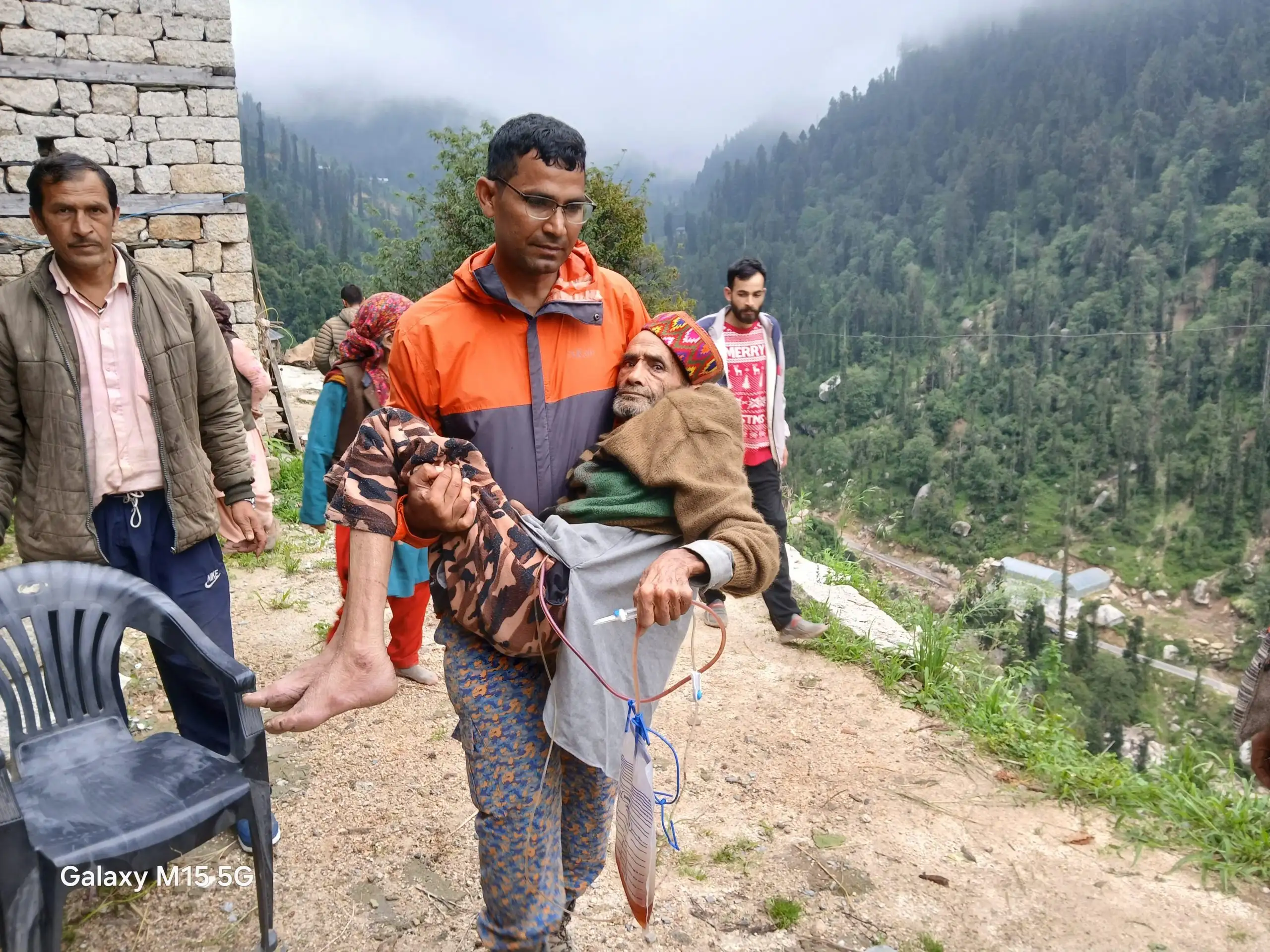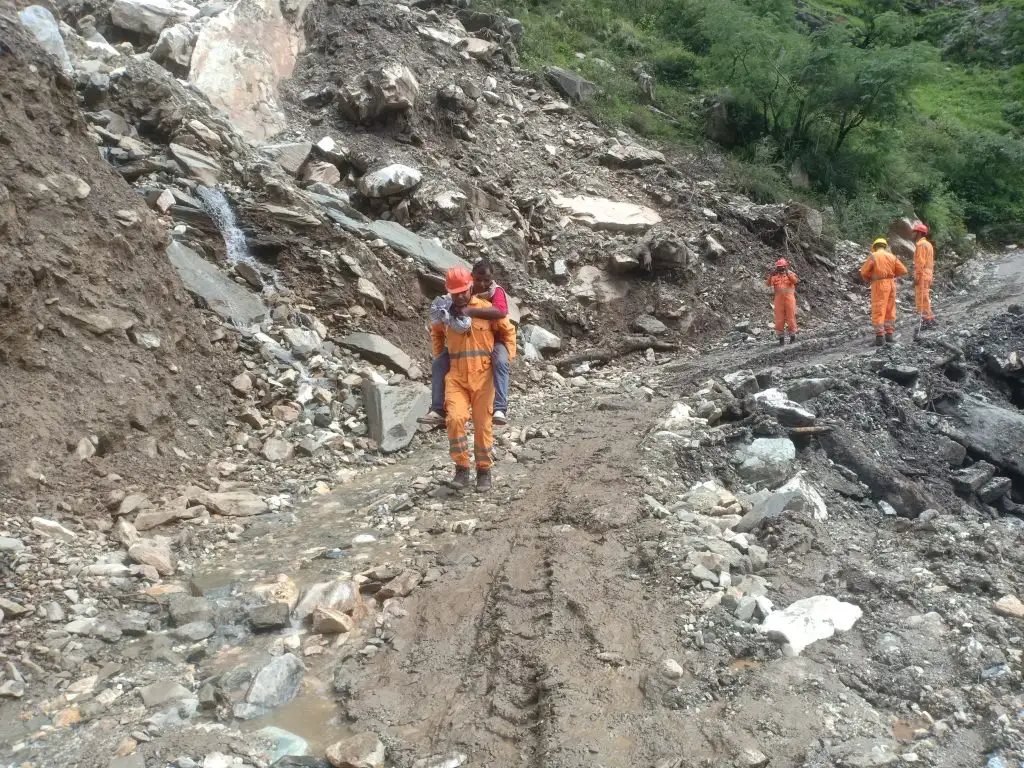Monsoon on the Edge: Climate, Development, and Disaster in the Himalayas

At least 69 people have died, 37 are missing, and 110 have been injured as Himachal Pradesh struggles with cloudbursts, flash floods, and landslides caused by several days of continuous and heavy monsoon rainfall. Each year, the monsoon comes like a clock to Himachal Pradesh and Uttarakhand. And each year now, it brings not just rain that gives life, but growing fear. The black clouds that once meant rest from summer heat now often mean something much more dangerous: sudden floods, landslides, broken roads, and turned-over lives.
In the summer of 2025, the known crisis came back. Roads to Kedarnath and Badrinath were blocked by landslides, leaving thousands of pilgrims stuck. Children in far villages saw their schools close down. For many in these hill states, the monsoon is no longer a time of new growth. It has become a test of staying alive.
These are not separate acts of nature. They are part of a bigger pattern, shaped by human choices as much as by weather. The Himalayas are getting warmer faster than most places on Earth. This is breaking long-set weather cycles. Heavy rain is now packed into fewer days, making the risk of cloudbursts and floods higher.
All this is happening in a region that is already weak. The Himalayas were never easy ground – steep hills, loose rocks, and deep valleys made by ice over hundreds of years. Decades of cutting forests for roads, power, and houses have taken away these natural guards. Rain that would have soaked into the dirt now runs off the bare ground, getting speed and damage as it moves.
We have been building in the mountains without enough care for what the land can take. Huge road-widening projects cut into hillsides. In Joshimath, a whole town started to sink under the weight of uncontrolled building. That crisis was a warning.
The building boom has moved faster than our knowledge of what it causes. New highways cut through ridges, often causing landslides years later. Water power projects change rivers and alter water patterns that have been there for years. Each new project seems right by itself, but together they make a web of weakness.
Tourism adds another layer of stress. More people mean more buildings, more trash, and more stress on roads that are already falling apart under the weight of ground instability.
At the same time, mountain communities facing repeated disasters are moving to towns that may be just as weak, only more crowded. Climate change is not just about big disasters – it is also about slow movement of people. Unreliable weather patterns, crop failures, and repeated damage to buildings are making traditional mountain ways of life harder and harder to keep going.

Ongoing Rescue Efforts by NDRF Team from Landslide-affected Area in Uttarkashi. Photo Credit: NDRF
The cost of all this is huge. Himachal Pradesh’s 2023 floods caused damage worth ₹10,000 crore and affected thousands of homes. But beyond the numbers are countless personal tragedies. Families watch their old family homes fall down. Farmers see terrace fields that took generations to build wash away in hours. Small business owners lose everything they have worked for to forces they cannot control.
Each time disaster hits, the economy takes a blow. The social impact cuts even deeper. Young people are leaving the hills in numbers never seen before, looking for stability that mountain life can no longer give. This leaving behind creates aging populations with fewer resources to deal with growing risks. Villages that once buzzed with activity are becoming empty towns, their remaining people more and more isolated and weak.
Still, there are signs of a different path ahead. Some villages are trying approaches that work with natural systems rather than against them. In places like Khati and Wachham in Bageshwar district, communities have focused on ways of living that last – nature tourism, organic farming, processing of healing herbs – that do not require fighting the landscape.
These efforts are not just good for the environment; they work economically. They help keep young people by offering choices other than moving away. They build on traditional knowledge while using modern tools and methods. Most importantly, they show that mountain communities do not have to choose between growth and survival.
Traditional practices hold special promise. Water collection methods developed over hundreds of years can help manage the increasingly uneven rainfall patterns. Ancient terracing methods spread water flow in ways that modern engineering is only starting to understand. Native forest management practices keep variety of life while protecting against wearing away.
These approaches work because they are based on deep understanding of local conditions. They have grown through generations of trying and failing in the same landscapes where communities still live. Combined with modern communication tools and scientific watching, they offer templates for strength that could be made bigger across the region.
But individual success stories, while inspiring, cannot solve problems that span entire watersheds and involve complex interactions between climate, geology, economics, and governance. Real solutions require working together and basic changes in how development happens in mountain regions.
This means limiting building on unstable slopes based on real geological understanding, not just bureaucratic ease. Environmental impact checks must involve communities who understand how water moves through their watersheds. Development projects need to be judged not just for their immediate benefits, but for their long-term effects on landscape stability.
Replanting forests needs to happen at the landscape level, with native species chosen specifically for their ability to make soil stable and manage water flow. Water management systems should use both modern engineering and traditional methods that have proven effective over time. The goal is not to stop all development, but to make sure that what gets built can survive in a changing mountain environment.
Early warning systems should be built around communities rather than forced from outside. Local people need training to recognize signs of danger and respond quickly. Villages need the tools and knowledge to help themselves and their neighbors rather than depending entirely on distant rescue teams.
Most importantly, recovery efforts must address the social inequalities that make disasters so devastating for vulnerable families. This means not just financial help, but access to insurance, training for different ways of making a living, and mental health support for communities hurt by repeated losses.
The repeating floods in Himachal Pradesh and Uttarakhand are not just natural disasters. They are a conversation between human choices and natural forces. Every road we build, every forest we clear, every development project we approve is part of that conversation.
The mountains are speaking through every landslide and flash flood, every cracked foundation and washed-out bridge. They are telling us that approaches to development that might work in stable ground simply do not apply in these changing, growing mountains. They are showing us the results of treating complex natural systems as if they were simple engineering problems.
The challenge is not to prevent all future disasters – the Himalayas will always be changing mountains where earthquakes, landslides, and floods are part of the natural order. The challenge is to learn to live with this change rather than pretending it does not exist.
This requires humility about what we can and cannot control. It requires respect for natural processes that have been shaping these landscapes for millions of years. It requires understanding that in mountains, the safest approach is often the one that works with natural forces rather than against them.
Next year, the monsoon will come again, as it has for thousands of years. Whether it brings renewal or destruction depends on choices being made right now in government offices and village councils, in individual homes and corporate boardrooms. The mountains have been patient teachers, but they are running out of patience. The question is whether we are finally ready to listen to what they have been trying to tell us.
